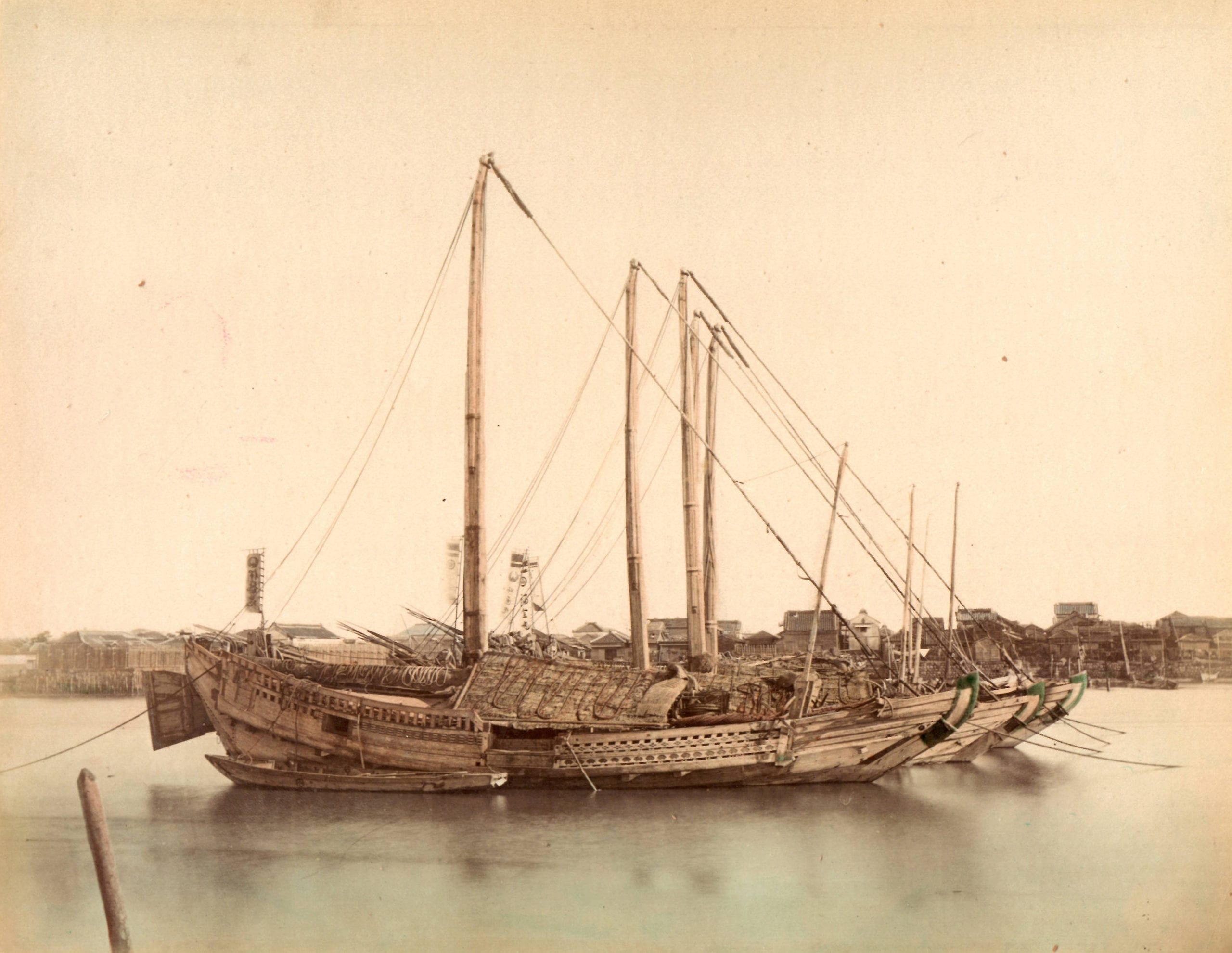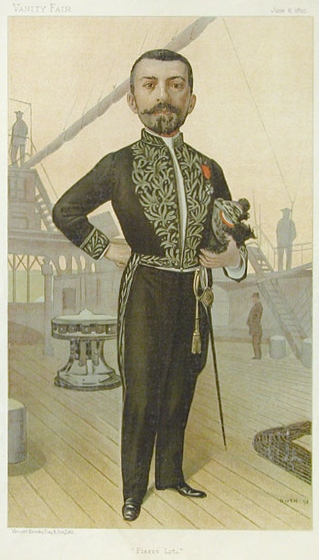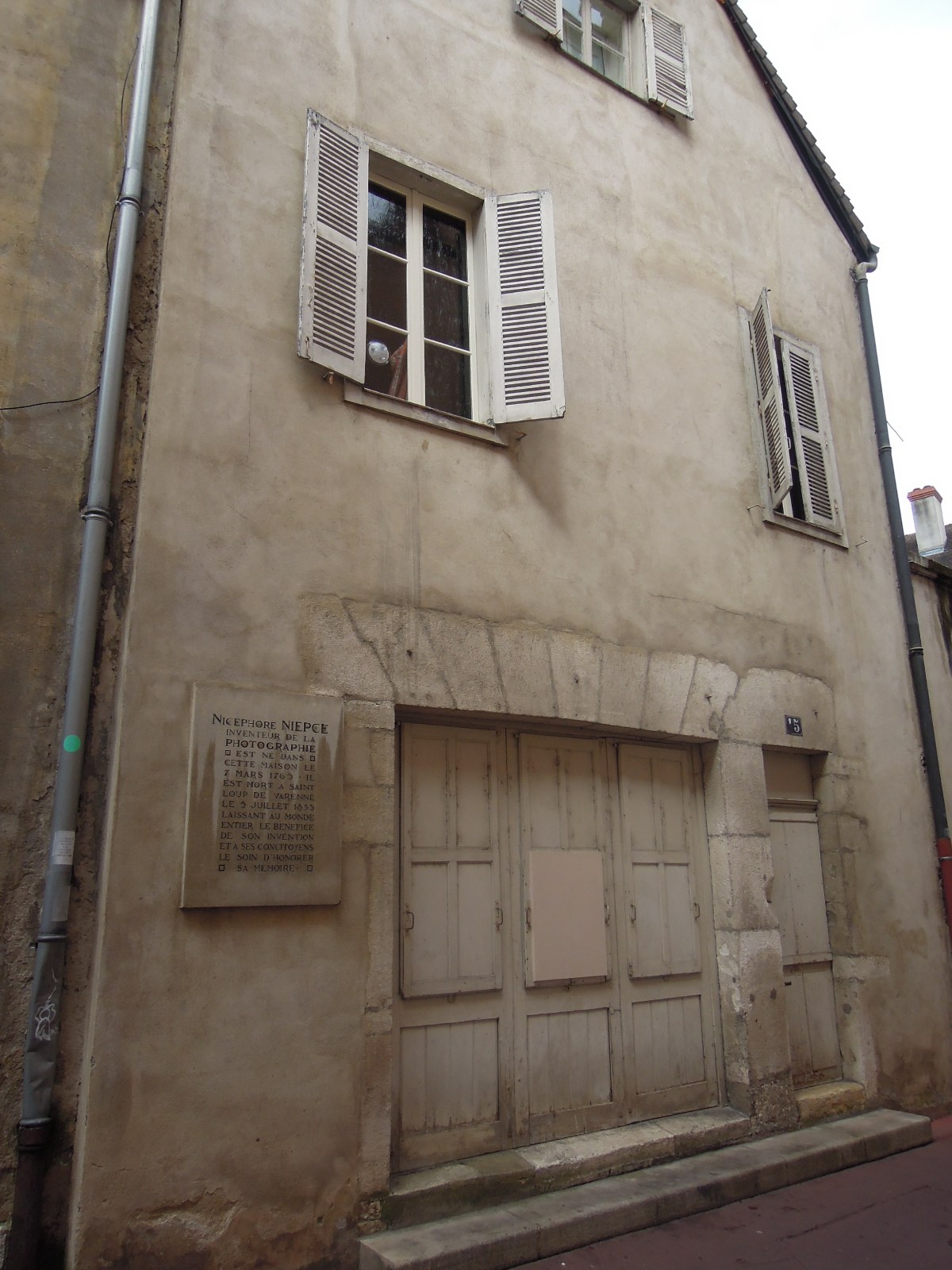|
Ueno Hikoma
was a pioneer Japanese photographer, born in Nagasaki. He is noted for his fine portraits, often of important Japanese and foreign figures, and for his excellent landscapes, particularly of Nagasaki and its surroundings. Ueno was a major figure in nineteenth-century Japanese photography as a commercially and artistically successful photographer and as an instructor. Background, youth, and preparation Ueno Hikoma's family background perhaps provided an early impetus for his eventual career. A number of family members had been portrait painters. Furthermore, he was the son of Ueno Toshinojō (also known as Ueno Shunnojō) (1790–1851), a merchant in the employ of the Shimazu clan who in 1848 imported possibly the first camera in the country, a daguerreotype camera for the Shimazu ''daimyō'', Nariakira. Ueno Hikoma first studied Chinese classics; then in 1852, not long after his father's death, he entered the Nagasaki Medical College with a view to studying chemistry ... [...More Info...] [...Related Items...] OR: [Wikipedia] [Google] [Baidu] |
Nagasaki, Nagasaki
is the capital and the largest city of Nagasaki Prefecture on the island of Kyushu in Japan. It became the sole port used for trade with the Portuguese and Dutch during the 16th through 19th centuries. The Hidden Christian Sites in the Nagasaki Region have been recognized and included in the UNESCO World Heritage List. Part of Nagasaki was home to a major Imperial Japanese Navy base during the First Sino-Japanese War and Russo-Japanese War. Near the end of World War II, the American atomic bombings of Hiroshima and Nagasaki made Nagasaki the second and, to date, last city in the world to experience a nuclear attack (at 11:02 am, August 9, 1945 'Japan Standard Time (UTC+9)'). , the city has an estimated population of 407,624 and a population density of 1,004 people per km2. The total area is . History Nagasaki as a Jesuit port of call The first contact with Portuguese explorers occurred in 1543. An early visitor was Fernão Mendes Pinto, who came from Sagres on ... [...More Info...] [...Related Items...] OR: [Wikipedia] [Google] [Baidu] |
Collodion Process
The collodion process is an early photographic process. The collodion process, mostly synonymous with the "collodion wet plate process", requires the photographic material to be coated, sensitized, exposed, and developed within the span of about fifteen minutes, necessitating a portable darkroom for use in the field. Collodion is normally used in its wet form, but it can also be used in dry form, at the cost of greatly increased exposure time. The increased exposure time made the dry form unsuitable for the usual portraiture work of most professional photographers of the 19th century. The use of the dry form was therefore mostly confined to landscape photography and other special applications where minutes-long exposure times were tolerable. History Gustave Le Gray first theorized about the collodion process, publishing a method in 1850 that was "theoretical at best", but Frederick Scott Archer was credited with the invention of the process, which he created in 1848 and publis ... [...More Info...] [...Related Items...] OR: [Wikipedia] [Google] [Baidu] |
Madame Chrysanthème (novel)
is a novel by Pierre Loti, presented as the autobiographical journal of a naval officer who was temporarily married to a Japanese woman while he was stationed in Nagasaki, Japan. It closely follows the journal he kept of his summer 1885 affair with Kiku (Chrysanthemum) née Kane a few blocks north of Glover Garden in the () neighbourhood; modern day (), whence she fled to hometown due to xenophobia. Originally written in French and published in 1887, was very successful in its day, running to 25 editions in the first five years of its publication with translations into several languages including English. It has been considered a key text in shaping western attitudes toward Japan at the turn of the 20th century. It is known in Japan under the title of (), which is a direct translation of the French name. André Messager's 1893 opera Opera is a form of theatre in which music is a fundamental component and dramatic roles are taken by singers. Such a "work" (the lite ... [...More Info...] [...Related Items...] OR: [Wikipedia] [Google] [Baidu] |
Pierre Loti
Pierre Loti (; pseudonym of Louis Marie-Julien Viaud ; 14 January 1850 – 10 June 1923) was a French naval officer and novelist, known for his exotic novels and short stories.This article is derived largely from the ''Encyclopædia Britannica Eleventh Edition'' (1911) article "Pierre Loti" by Edmund Gosse. Unless otherwise referenced, it is the source used throughout, with citations made for specific quotes by Gosse. Biography Born to a Protestant family, Loti's education began in his birthplace, Rochefort, Charente-Maritime. At age 17 he entered the naval school in Brest and studied at Le Borda. He gradually rose in his profession, attaining the rank of captain in 1906. In January 1910 he went on the reserve list. He was in the habit of claiming that he never read books, saying to the Académie française on the day of his introduction (7 April 1892), "''Loti ne sait pas lire''" ("Loti doesn't know how to read"), but testimony from friends proves otherwise, as does his libra ... [...More Info...] [...Related Items...] OR: [Wikipedia] [Google] [Baidu] |
Edmond Cotteau
Edmond is a given name related to Edmund. Persons named Edmond include: * Edmond Canaple (1797–1876), French politician * Edmond Chehade (born 1993), Lebanese footballer * Edmond Conn (1914–1998), American farmer, businessman, and politician * Edmond de Goncourt (1822–1892), French writer * Edmond Etling (before 1909–1940), French designer, manufacturer * Edmond Halley (1656–1742), English astronomer, geophysicist, mathematician, meteorologist, and physicist * Edmond Haxhinasto (born 1966), Albanian politician * Edmond Maire (1931–2017), French labor union leader * Edmond Rostand * Edmond James de Rothschild * Edmond O'Brien * Edmond Panariti * Edmond Robinson *Edmond Tarverdyan, controversial figure in MMA In fiction * Edmond Dantès, The main character in 'The Count of Monte Cristo' by Alexandre Dumas. * Edmond Elephant, a character from Peppa Pig * Edmond Honda, a character from the ''Street Fighter'' series * Edmond, a character from Rock-A-Doodle * Edmond, a ... [...More Info...] [...Related Items...] OR: [Wikipedia] [Google] [Baidu] |
Photographic Studio
A photographic studio is often a business owned and represented by one or more photographers, possibly accompanied by assistants and pupils, who create and sell their own and sometimes others’ photographs. Since the early years of the 20th century the business functions of a photographic studio have increasingly been called a photographic agency leaving the term "photographic studio" to refer almost exclusively to the workspace. The history of photographic studios and photography dates back to the 1840s with the invention of processes for recording camera pictures, by Henry Fox Talbot and Louis Daguerre. The earliest photographic studios made use of natural daylight to create photographic portraits. As already used by artists, a northern light with no direct sunlight was favoured. The first use of a "flash" dates back to 1839 when L. Ibbetson used limelight to photograph very small objects. Limelight was produced by placing a piece of lime into a flame fuelled with oxy-hy ... [...More Info...] [...Related Items...] OR: [Wikipedia] [Google] [Baidu] |
Rangaku
''Rangaku'' (Kyūjitai: /Shinjitai: , literally "Dutch learning", and by extension "Western learning") is a body of knowledge developed by Japan through its contacts with the Dutch enclave of Dejima, which allowed Japan to keep abreast of Western technology and medicine in the period when the country was closed to foreigners from 1641 to 1853 because of the Tokugawa shogunate's policy of national isolation (sakoku). Through Rangaku, some people in Japan learned many aspects of the scientific and technological revolution occurring in Europe at that time, helping the country build up the beginnings of a theoretical and technological scientific base, which helps to explain Japan's success in its radical and speedy modernization following the forced American opening of the country to foreign trade in 1854. History The Dutch traders at Dejima in Nagasaki were the only Europeans tolerated in Japan from 1639 until 1853 (the Dutch had a trading post in Hirado from 1609 till 1641 bef ... [...More Info...] [...Related Items...] OR: [Wikipedia] [Google] [Baidu] |
Ueno View
is a district in Tokyo's Taitō Ward, best known as the home of Ueno Park. Ueno is also home to some of Tokyo's finest cultural sites, including the Tokyo National Museum, the National Museum of Western Art, and the National Museum of Nature and Science, as well as a major public concert hall. Many Buddhist temples are in the area, including the Bentendo temple dedicated to goddess Benzaiten, on an island in Shinobazu Pond. The Kan'ei-ji, a major temple of the Tokugawa shōguns, stood in this area, and its pagoda is now within the grounds of the Ueno Zoo. Nearby is the Ueno Tōshō-gū, a Shinto shrine dedicated to Tokugawa Ieyasu. Near the Tokyo National Museum there is The International Library of Children's Literature. Just south of the station is the Ameya-yokochō, a street market district that evolved out of an open-air black market that sprung up after World War II. Just east is the Ueno motorcycle district, with English-speaking staff available in s ... [...More Info...] [...Related Items...] OR: [Wikipedia] [Google] [Baidu] |
Nicéphore Niépce
Joseph Nicéphore Niépce (; 7 March 1765 – 5 July 1833), commonly known or referred to simply as Nicéphore Niépce, was a French inventor, usually credited with the invention of photography. Niépce developed heliography, a technique he used to create the world's oldest surviving product of a photographic process: a print made from a photoengraved printing plate in 1825. In 1826 or 1827, he used a primitive camera to produce the oldest surviving photograph of a real-world scene. Among Niépce's other inventions was the Pyréolophore, one of the world's first internal combustion engines, which he conceived, created, and developed with his older brother Claude Niépce. Biography Early life Niépce was born in Chalon-sur-Saône, Saône-et-Loire, where his father was a wealthy lawyer. His older brother Claude (1763–1828) was also his collaborator in research and invention, but died half-mad and destitute in England, having squandered the family wealth in pursuit of n ... [...More Info...] [...Related Items...] OR: [Wikipedia] [Google] [Baidu] |
Tokyo
Tokyo (; ja, 東京, , ), officially the Tokyo Metropolis ( ja, 東京都, label=none, ), is the capital and largest city of Japan. Formerly known as Edo, its metropolitan area () is the most populous in the world, with an estimated 37.468 million residents ; the city proper has a population of 13.99 million people. Located at the head of Tokyo Bay, the prefecture forms part of the Kantō region on the central coast of Honshu, Japan's largest island. Tokyo serves as Japan's economic center and is the seat of both the Japanese government and the Emperor of Japan. Originally a fishing village named Edo, the city became politically prominent in 1603, when it became the seat of the Tokugawa shogunate. By the mid-18th century, Edo was one of the most populous cities in the world with a population of over one million people. Following the Meiji Restoration of 1868, the imperial capital in Kyoto was moved to Edo, which was renamed "Tokyo" (). Tokyo was devastate ... [...More Info...] [...Related Items...] OR: [Wikipedia] [Google] [Baidu] |
Ryō (Japanese Coin)
The was a gold currency unit in the shakkanhō system in pre- Meiji Japan. It was eventually replaced with a system based on the ''yen''. Origins The ''ryō'' was originally a unit of weight from China, the ''tael.'' It came into use in Japan during the Kamakura period. By the Azuchi–Momoyama period it had become nearly uniform throughout Japan, about 4.4 ''monme'' as a unit of weight (about the same as 16.5 grams). During the Sengoku period, various local ''daimyō'' began to mint their own money. One of the best known and most prestigious of these private coins was the ''koshukin'' issued by the warlord Takeda Shingen, who had substantial gold deposits within his territories. The value of the koshukin was based on its weight, with one ''koshukin'' equal to one ryō of gold, and thus stamped with its weight (about 15 grams). During the Tenshō period (1573–1592), one ryō was equal to four ''koku'' of rice, or 1000 brass coins. Tokugawa period The Tokugawa shogunate at ... [...More Info...] [...Related Items...] OR: [Wikipedia] [Google] [Baidu] |
Tōdō Takayuki
was the 11th ''daimyō'' of Tsu Domain under the late Edo period Tokugawa shogunate and the 19th hereditary chieftain of the Tōdō clan. Takayuki's sudden betrayal of the Tokugawa forces at the Battle of Toba–Fushimi during the Boshin War was one of the decisive factors which turned the battle in the imperial army's favor. Biography Takayuki was born in 1813 as the son of the previous ''daimyō'' of Tsu Domain, Tōdō Takasawa. His mother was a daughter of the ''daimyō'' of Tanakura Domain, Nagai Naonobu. He succeeded his father as ''daimyō'' at the age of 11. That year, he was received in formal audience by Shogun Tokugawa Ienari and two years later was accorded the courtesy titles of ''Izumi-no-kam'' and ''jijū'', and Junior Fourth court rank.His courtesy title was promoted to ''Sakon'e-no-shosho'' (左少将) in 1840. In 1842, as concern over the increasing incursions of foreign ''kurofune'' warships into Japanese waters grew, the shogunate ordered Tsu Domain to assu ... [...More Info...] [...Related Items...] OR: [Wikipedia] [Google] [Baidu] |






